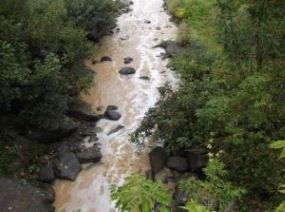Home → Monitoring → TMDL Documents
Total Maximum Daily Loads (TMDLs)

A Total Maximum Daily Load, or TMDL, is a component of the Clean Water Act and a tool to restore impaired waters. The Total Maximum Daily Load is the amount of a pollutant that a water (river, stream, lake, etc.) can receive and still meet water quality standards.
Maine has a number of TMDLs approved by the Federal Environmental Protection Agency (EPA). These include a regional TMDL for mercury, three statewide TMDLs for bacteria, nonpoint source pollution, and impervious cover, and individual TMDLs for lakes and streams. Approved TMDL documents and supporting materials can be found here: TMDLs approved by EPA.
Draft TMDLs are available for public comment prior to approval. See the Public Comment Opportunities Page for any draft TMDLs that may be available.
303(d) Program Vision
The 303(d) Program Vision, communicated by EPA, instructs states to write a Prioritization Framework document to articulate how the state plans to carry out 303(d) program activities in the coming decade. The 303(d) program refers to Section 303(d) of the Clean Water Act. Section 303(d) activities include assessing if waters meet water quality standards, compiling a list of impaired waters (waters that do not meet water quality standards), and developing Total Maximum Daily Loads (TMDLs) for those impaired waters. The 303(d) Program Vision expands on these core 303(d) program activities and is intended to encourage flexible and innovative approaches to implement the 303(d) program, identify strategies for restoration and protection, strengthen partnerships, and develop solutions to water quality issues.Read the Maine 303(d) Vision Prioritization Framework
Supplemental materials
For additional information and assistance, please contact Tracy Krueger at (207) 215-6851.